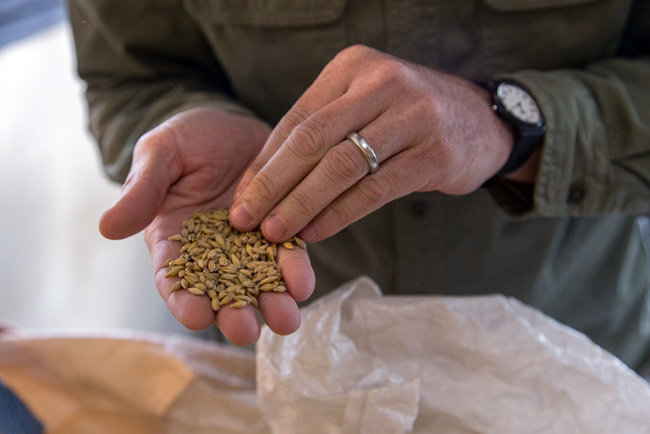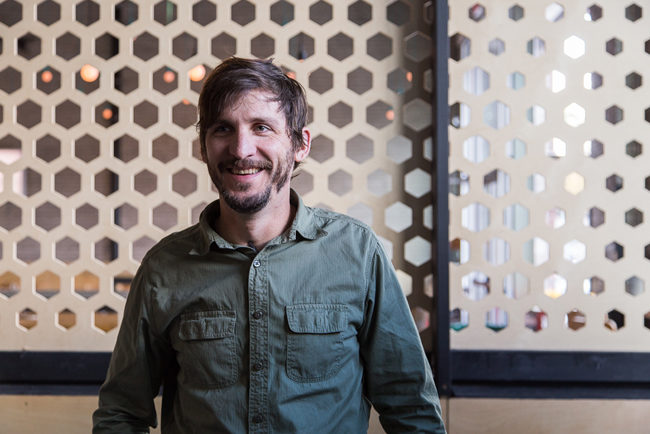
“A lot of people have forgotten that beer is a mostly agricultural product,” Casey Holley says. “There’s people growing hops in Minnesota, there’s people growing grain in Minnesota, and their livelihood depends on it. And for me, I just kind of lost that connection that these ingredients have stories, and they’re based in history and family and tradition and flavor and all these cool things that we care about.”
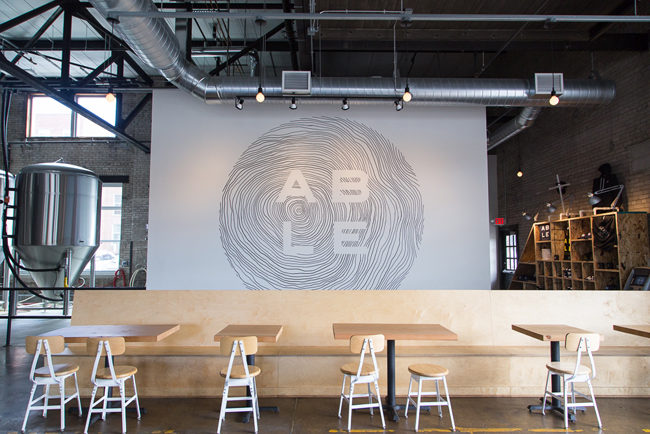
Holley is the proprietor of Able Seedhouse + Brewery, which opened a year ago in a Northeast Minneapolis building that used to be a maintenance garage for school buses. It came with the slope-to-drain floors and high ceilings conducive to brewing and the giant roll-up doors conducive to a light-filled, airy taproom — and, at 10,000 square feet, enough space to accommodate a malthouse. The latter was important to Holley, who named his company “seedhouse” because it was always his intention to make his own malt from Minnesota grains. Thus far it hasn’t been easy: Malting is expensive and labor intensive, and five years in, he’s just at the early experimentation stage. Yet he’s as passionate about the project as ever. When he talks about it, he seems to slip unconsciously into rhetorical patterns of speech, repeating and amplifying like an evangelical. And he’s so earnest and knowledgeable that he’s persuasive.
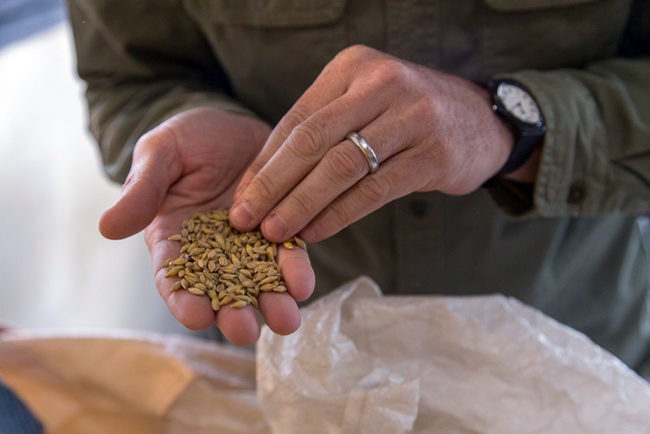
Holley is one of a handful of folks in the Twin Cities — growers, millers, producers — who are doing interesting things with local grains. To name a few: Northern Minnesota Kernza has made national news and local plates, turning up in everything from the Birchwood Cafe’s waffles to Dumpling & Strand’s noodles. Solveig Tofte of Sun Street Breads has been experimenting with small grains in her breads, including barley, corn, spelt, and wild rice. And over in the Food Building, Steve Horton of Baker’s Field Flour & Bread is milling local buckwheat, corn, rye, spelt, and oats. “I think the work these people are doing is outstanding,” Holley says. “They’re trying to figure out how we add flavors that are historic or new into these products through small grains. And we have the resources here — in Minneapolis, in the mill city, in the grain belt — we should be the first in the country to figure out how to do that.”
Although a native Minnesotan, Holley didn’t come into this world a local grain enthusiast. In fact, he found his calling while living on the West Coast.
Holley and his wife, Cari, spent three years in Lodi, Calif., where Cari had a business assignment in supply chain management. At the time, Holley was working remotely for an IT consulting company in Minnesota. He’d had the job for ten years, and he’d been their first employee, so he’d learned a lot about the day-to-day work of making a startup go, but the industry wasn’t inspiring to him. “Something was already kind of bubbling up inside of me,” he says. “I knew there was going to be a move from my current job to chasing down something that I believed in, and I knew I really needed to build something, but it just fully manifested itself in the Central Valley.”
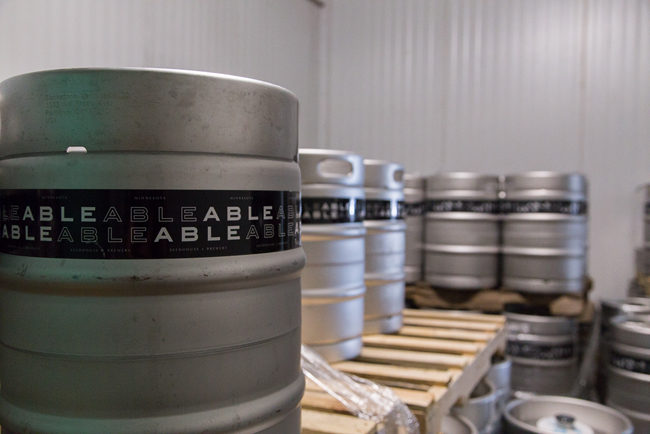
As foodies, he and Cari had spent a lot of time — even before they moved to Lodi — traveling the coast from Big Sur to Sonoma and inland to Napa, eating and drinking. But actually living in the Central Valley, where much of our country’s food is grown, brought home the relationship between farmers and producers. “You can’t live in Lodi and not be impacted by what’s going on around you, what makes the town tick, which is wine grapes,” Holley says. “But it’s not just grapes, it’s every single fruit and vegetable and nut we eat, and then you go to San Francisco and see what the chefs are doing, and up to Sonoma and see what the wine- and cheesemakers are doing. It’s impossible not to have at least a fleeting interest. For me, it was, oh my gosh, I’m feeling something.”
Contemplating the impending move back to Minnesota, Holley looked for a connection between what he had discovered in California and the food, wine, and beer culture in Minnesota. “It was just so glaringly obvious that it was our small grains,” he says. “But what I didn’t know was if we could malt on a small scale.”
Luckily, Lance Jergensen, one of the first craft maltsters in the U.S., was just a hop over the Sierra Mountains from Lodi, in Reno, Nev., and he was happy to show Holley the ropes. Jergensen’s Rebel Malting Company malts barley, millet, emmer, wheat, and buckwheat grown within 100 miles of his malthouse and sells it to local brewers. “They made beer with it, and it was good beer, so that was a turning point for us,” says Holley. “Here’s an idea we could potentially do. No one [craft] malts in Minnesota, I remembering saying, maybe there’s a reason for that. We found out why: It’s damn hard.”

Holley boils the challenges down to resources and time, both generally in short supply for small breweries. “I can buy malt from Rahr in two clicks,” he says, “and it will be here tomorrow.” Rahr Corporation, in Shakopee, is one of the largest malt production facilities in the world. In fact, it recently expanded its malthouse, effectively taking its “malting capacity from 390,000 to 460,000 metric tons — enough to brew about 12 billion 12-ounce cans of light beer or 6 billion bottles of craft beer.”
Building even a modest malthouse is expensive. Holley’s is tucked into a corner of the Able brewery. He modeled it after Jergensen’s in Reno, and the whole of it is a steep tank, a combo germination and kiln tank, a seed cleaner, and a mill. Their stainless steel simplicity belies a price tag in the tens of thousands of dollars.
It’s taken three years to find the grains to malt. “There’s a lot of corn and soy bean farmers that, if I asked them to grow five acres of barley for me, would say get out of here,” Holley says. “So I had to find people who were not only growing really great grain, but also could do it in small quantities.” He tried contracting grains from farmers who grew his small crops on top of corn and beans, but the end product was high in toxins, and he couldn’t use it. In the end, he went to the small grains team at the University of Minnesota Extension, and they helped him find some local farmers. This summer, they delivered three tons of grain: wheat and barley from Browns Valley, barley from Kennedy, and rye from Hallock.
And then there is the malting itself. “Our set-up is manual, so it’s very labor intensive,” Holley says. “That’s one of the coolest aspects — it’s such a sensory experience — but it’s also our biggest challenge because, if you don’t keep on top of it, you lose it.”
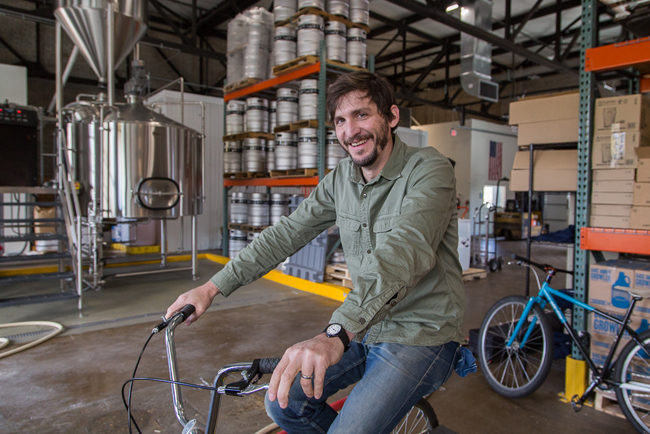
Malting is essentially the process of partially sprouting a hard kernel of grain, so that its sugars are accessible in the fermenting stage of brewing and distilling. To do that, the grain is first rinsed and soaked in the steep tank, where after a few days it begins to chit, the early stages of sprouting. Next, the water is drained and the grain goes into the combo germination and kiln tank to germinate, continuing to grow and sprout for another four days or so, during which it needs to be raked and turned constantly so that it gets enough oxygen and stays at the right temperature. Once the grain is done germinating, the tank becomes a kiln, and the maltster dries and kilns the grain to stop it from growing. At that point, they run it through the seed cleaner and knock off all the rootlets on the outside of the seed, crack it in the mill — and then, theoretically speaking, it’s ready to use.
But Holley says things can go wrong at any stage of the eight-day process: The grain can mold or take on bacteria. It can under- or overgerminate. If it steeps too long, it can actually die.
He’s run ten 100-pound test batches, and so far only one has looked like it might be worth even sending out for analysis to see if it would be good for brewing. “I knew it wasn’t perfect,” Holley says, “but I was just super excited to get it to a place where we could set a bar. It’s down here, but at least we have an idea what the issues are and what to do to get up.”
Holley won’t even speculate about when he’ll have a workable malt, and his goals are humble. “We talk about it in percentages of the malt bill,” he says. “Our hope is that we can get to 100 percent, but if we can get five percent of our rye or barley malt into our beers, we’ll feel pretty good.”

If Able gets really good at malting, he says they’ll sell the product. “I knew that we cared about malt within the four walls of Able,” he says, “but I didn’t know if anyone else would give a shit until some of the other breweries, distilleries, and small food companies in town started approaching us. And then we realized there’s something of value here.”
What is the value of craft malt? “I want to build an honest, thoughtful product, and in doing that, support the small farmers — that’s why it’s important to us,” he says. “If we’re able to build that part of the business, we know that we get to build relationships with small farmers, we get to create jobs in the taproom, we get to keep making great beer, and hopefully consumers will drink it.”
In the meantime, Able Seedhouse + Brewery is doing well by Holley’s standards. “I measure everything by experience and relationships,” he says. “From that standpoint, my cup is overflowing. It’s been fulfilling in every possible way.”
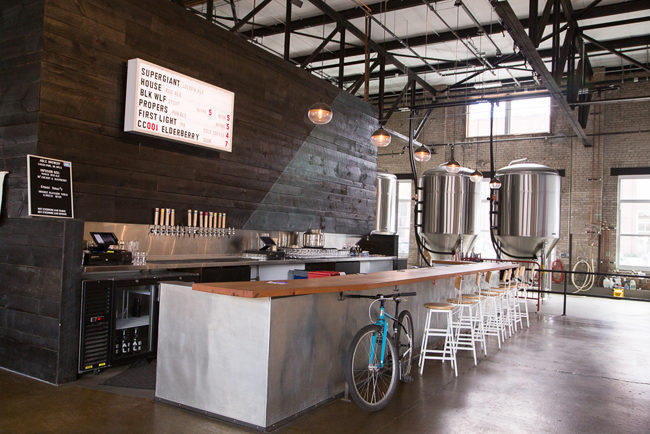
The business is also doing well in terms of growth. Able employs 15 people, including brewer Bob Blasey. In November, Holley is hiring a maltster, who’ll be heading up to Canada for malting school. Then he’ll work on getting a couple of more people in to help with the brewing. And, he says, the brewery sells more beer each month.
At the moment, his favorite is Able’s IPA First Light. “It just hits all my senses in a very pleasing way,” he says. “It’s got a beautiful aroma. It’s super hop forward in that respect, but it’s really balanced and layered, and it finishes super clean. And just to know everything that went into getting that beer into cans, and where this all started, is rewarding beyond words.”

